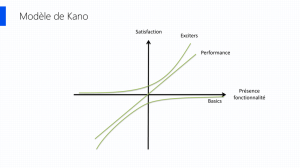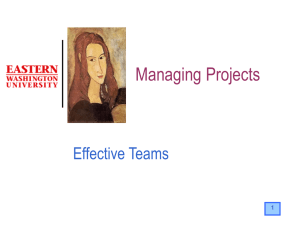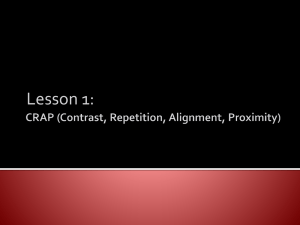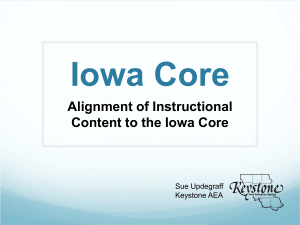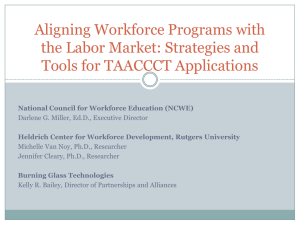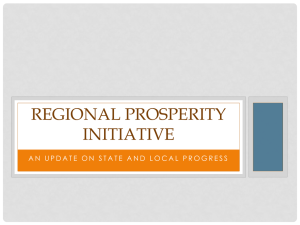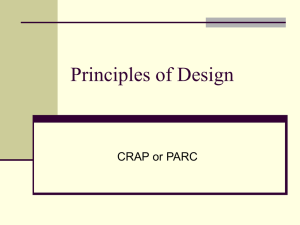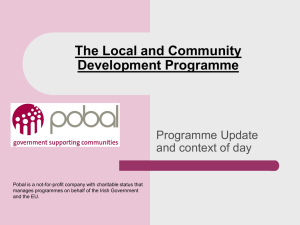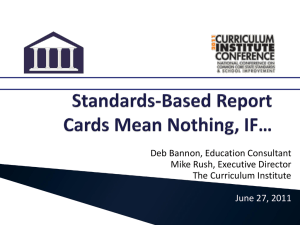Curriculum Alignment - Clare
advertisement
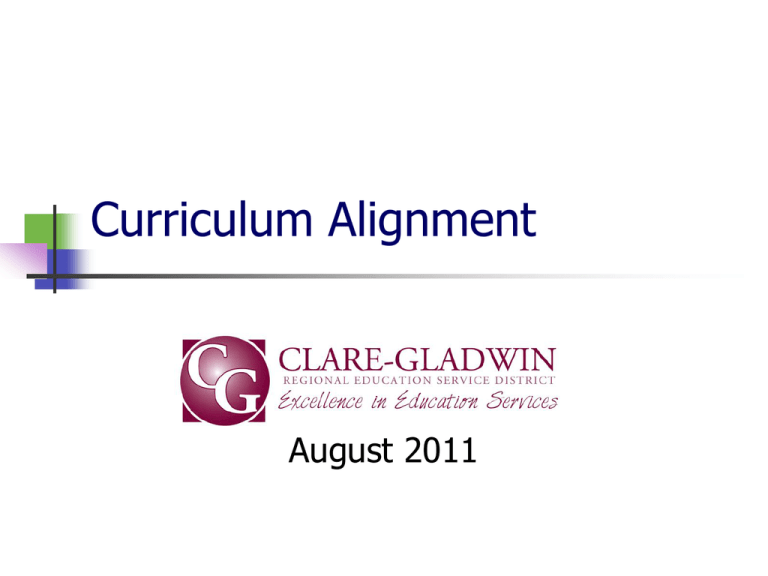
Curriculum Alignment August 2011 On The “ROAD” With… CURRICULUM ALIGNMENT Clare-Gladwin RESD What is “Curriculum Alignment?” Curriculum alignment means the skills & concepts we TEACH the students MATCH the skills/concepts that are ASSESSED. “The basic construct for curriculum alignment is to ensure that what is tested is what is taught.” [English, Fenwick & Steffy, Betty (2001) Deep Curriculum Alignment] What is “Curriculum Alignment?” Curriculum alignment means that we have a SCOPE of WHAT to teach (the CCSS/GLCEs/HSCEs) and we follow an established SEQUENCE of WHEN to teach each skill/concept within the school year. “Curriculum refers to a specific blueprint for learning that is derived from content and performance standards. Curriculum takes content and shapes it into a plan for effective teaching and learning.” [Wiggins, Grant & McTighe, Jay (1998) Understanding by Design] What is “Curriculum Alignment?” Curriculum alignment means that we establish an ongoing DIALOGUE (horizontally & vertically) with our peers about how to IMPROVE TEACHING & LEARNING by identifying & addressing potential gaps and/or trouble spots. “[Curriculum] …mapping enables teachers to identify gaps, redundancies, and misalignments in the curriculum and instructional programs and to foster dialogue among teachers about their work.” [Jacobs, Heidi Hayes (2004) Getting Results With Curriculum Mapping] Relying on textbooks to determine what is taught and when it is taught is a curriculum error! • The text may not thoroughly address a tested content expectation in which your students are weak. • The text may not “get to” a tested content expectation before assessment! Relying on textbooks to determine what is taught and when it is taught is a curriculum error! • The text may not teach specific skills to the appropriate thinking level (DOK) at which the content expectation is targeted. • For example, a text may cover a skill at “application” level, but the assessment may test it at “evaluation.” Relying on textbooks to determine what is taught and when it is taught is a curriculum error! Texts claim to be correlated to state standards BIG red flag! • The text company is selling a product. Be a critical consumer. • Quick references are not the same as in depth coverage, for mastery. Using the content expectations as a checklist is a curriculum error! • We know when we’ve “taught it”… but do we know when they’ve “got it?” • If we just check off the expectations as we teach them, we miss a very important part of alignment… FORMATIVE ASSESSMENT! • Short, informal assessments along the way are vital in knowing how our instruction is impacting learning and who needs intervention in specific skills. • Monitored, formal benchmarks help us predict success and target learning gaps. Planning instruction first, and THEN matching the lesson plan to content skills is a curriculum error. • START with a clear understanding of your content expectations. • Determine how you will know when students have mastered the expectation? Format your assessment. • Then develop a learning plan that contains appropriate research-based strategies that compliment the targeted skills or concepts and will support high levels of student success. Skipping or minimizing alignment discussions, vertically or horizontally, is a curriculum error! • Only by addressing alignment, by beginning a dialog horizontally (same grade/subject) & vertically (same subject/multiple grades), will we be able to “hit the bull’s eye” with our instruction and fill in the gaps in student learning. Trying to complete too many alignment steps at once is a curriculum error! • Work horizontally and then vertically to align those learning expectations which are high priority and may be “trouble spots”. • Build from current practice and focus on essential learning. Step #1 to “Curriculum Alignment.” Know Your Destination (High levels of student learning) Step #2 to “Curriculum Alignment.” Know which HIGHWAY to take (Following the content expectations as your “road”…not the textbook) Step #3 to “Curriculum Alignment.” Closely watch the Details (The content, performance, and depth of knowledge needed for mastery and understanding) Step #4 to “Curriculum Alignment.” Travel in a dependable VEHICLE (Research-based instructional strategies, implemented and monitored) Step #5 to “Curriculum Alignment?” PACK for the necessitties (The resources you need to help you teach & assess for student Formative assessments learning.) Benchmark tests Textbooks Essential vocabulary Websites Intervention strategies And more! Step #6 to “Curriculum Alignment?” Ensure Increased Student Learning


